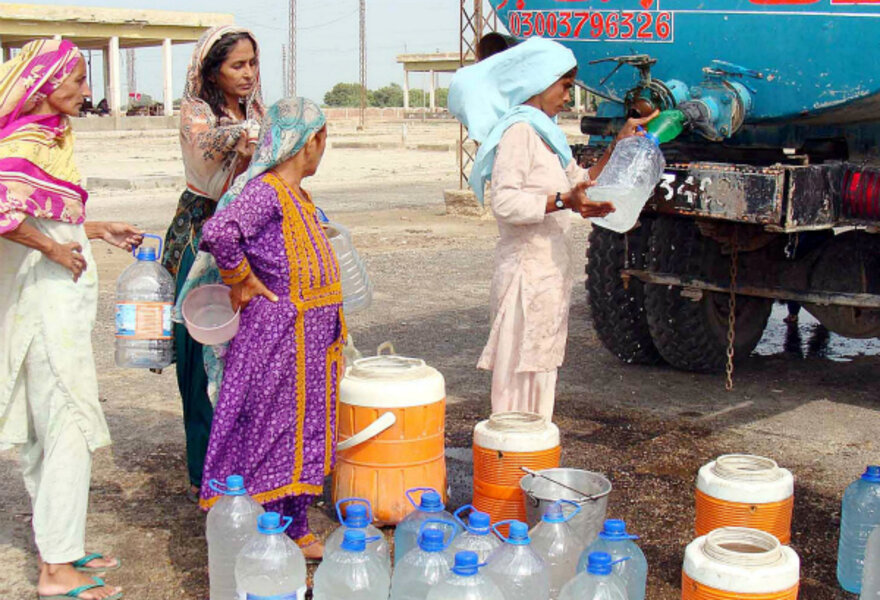The world doesn't need to go thirsty
Loading...
The next century is going to leave the planet parched for drinking water. But a new study asserts that the problem isn't water scarcity – it's water efficiency.
The global population is expected to reach 9 billion by 2050, and the UN Food and Agriculture Organization says we need to increase food and water production by 70 percent if we are to feed that population.
Can we do that with the resources we have?
Yes, says the study, published by the Consultative Group on International Agricultural Research (CGIAR). Researchers looked at 10 major river basins to assess how the world uses its water and concluded that with refined practices, we can sustainably exceed the needs of current and future generations.
It is not how much water we have, but how we use that water that will drive resource politics. According to CGIAR, most of the world considers different uses of water in isolation from one another. A more integrated approach to the water needs of food, industry, and energy would lead to more efficient allocation.
Dr. Simon Cook of the International Center for Tropical Agriculture described the current practice as one of “complete fragmentation of how river basins are managed amongst different actors and even countries where the water needs of different sectors – agriculture, industry, environment, and mining – are considered separately rather than as interrelated and interdependent.”
Today, for example, water rights are allocated to hydroelectricity in Vietnam's Mekong Delta, leaving farmers and fishermen up and down the river bereft of water. There's no shortage of Mekong water. It's just being unevenly distributed. CGIAR recommend water institutions take a more integrated approach, one that assesses the total needs of water within a region, rather than having compartmentalized institutions working independent from one another.
In sub-Saharan Africa, where the land is regularly parched and massive droughts like the current one in East Africa may become more commonplace, improving methods to save and store rain for agriculture use would also boost food production.
So the problem may not be an issue of resource scarcity or carrying capacity. But with this news comes responsibility: If the problems lie with us, then so must the solution.
• This article first appeared at Global Envision, a blog produced by Mercy Corps.
• Sign-up to receive a weekly selection of practical and inspiring Change Agent articles by clicking here.





